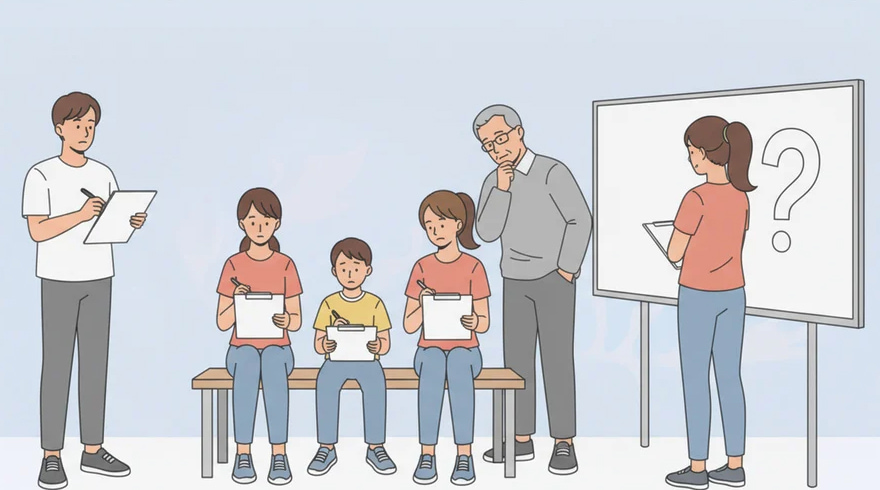A Comprehensive Guide to Gardner-Inspired Intelligence Assessments
- 4 November 2025

Origins, Context, and What This Assessment Measures
Three decades of educational innovation have shown that human capability is far broader than a single numerical score could ever capture. In classroom practice and workplace coaching, this approach reframes ability as a constellation of strengths that surface differently across tasks, cultures, and contexts. In public discourse, the Howard Gardner multiple intelligences test often gets conflated with IQ batteries, yet it maps distinct capacities instead of general g constructs. By shifting attention from a one-size-fits-all index to patterned proficiency, learners gain a vocabulary to describe how they tackle problems and express ideas. For many educators seeking pragmatic tools, the Gardner test offers a lens for tailoring instruction across modalities without diluting rigor.
The central insight behind this family of assessments is simple but powerful: people think, create, and solve in different ways. A musician hears structure where a coder sees logic, and a counselor senses interpersonal nuance where a scientist models systems. Rather than ranking these tendencies, robust instruments identify reliable tendencies and their contexts, encouraging strengths-based growth alongside deliberate work on weaker areas. When implemented ethically, this model promotes inclusion, reduces stereotype threat, and cultivates metacognition, because learners begin to notice not just what they know, but how they know.
The Eight Domains and How the Assessment Explores Them
Most implementations examine eight commonly referenced domains: linguistic, logical-mathematical, spatial, bodily-kinesthetic, musical, interpersonal, intrapersonal, and naturalistic. In practice, the Gardner intelligence test emphasizes patterns of strengths rather than a single score, highlighting how combinations of abilities create distinctive problem-solving styles. A well-designed instrument triangulates evidence from item responses, reflective prompts, and real-world artifacts so the resulting profile feels authentic, not generic or reductive.
To make this concrete, the following quick-reference table outlines each domain and the kinds of tasks that may surface it during an assessment session. Although no single item can fully represent a domain, clusters of items and context-rich scenarios can illuminate robust tendencies that generalize beyond a single sitting.
| Linguistic | Wordplay, narrative craft, precise phrasing, argumentative clarity, and sensitivity to nuance in tone. |
| Logical-Mathematical | Pattern detection, if-then reasoning, quantitative modeling, and systematic problem decomposition. |
| Spatial | Mental rotation, map use, diagramming, visual sequencing, and layout balance under constraints. |
| Bodily-Kinesthetic | Fine and gross motor coordination, timing, tool handling, and physical improvisation under feedback. |
| Musical | Rhythmic precision, melodic memory, harmonic expectation, and timbral discrimination across genres. |
| Interpersonal | Perspective-taking, conflict navigation, collaborative planning, and audience-aware communication. |
| Intrapersonal | Self-knowledge, reflective goal-setting, emotion labeling, and strategy selection under stress. |
| Naturalistic | Classification of living systems, sensitivity to ecological patterns, and observation of environmental change. |
Because naming conventions vary, you may encounter alternative labels that still point to the same theoretical core. When selecting instruments, the multiple intelligence test Gardner label can indicate checklists, inventories, or reflective prompts rather than timed puzzles, so always review sample items and reporting formats.
Benefits for Learners, Teachers, Parents, and Teams
Clear, actionable insight is the hallmark of an assessment that people actually use. Coaches and teachers can align tasks with dominant strengths while designing stretch challenges that build complementary skills. Among digital tools, a Gardner multiple intelligences test may combine scenario items with self-reports for richer profiles that speak both to preference and performance. When results feel personalized and grounded in observable behavior, motivation rises and feedback conversations become collaborative rather than evaluative in the narrow sense.
Beyond classrooms, managers use this perspective to design cross-functional projects where team members contribute through their best channels. Parents gain language for supporting homework without micromanaging, and learners of all ages discover strategies, spaced retrieval, visual scaffolds, embodied rehearsal, that match their cognitive style. Across platforms, modern Gardner intelligence tests frequently include situational judgments, portfolios, and context-aware adaptations so insights translate into daily routines and tangible growth.
- Differentiate instruction without tracking or fixed labels.
- Spot synergy between strengths to plan complex, authentic tasks.
- Guide skill-building by pairing a strong domain with a developing one.
- Elevate engagement through choice, relevance, and ownership.
- Frame feedback around strategies, not stable traits or comparisons.
Taking the Assessment: Preparation, Administration, and Interpretation
Good preparation is less about cramming and more about showing your authentic approach to tasks. Before starting, gather examples of work you’re proud of, reflect on situations where you excel, and notice contexts that reliably drain energy. In applied coaching, a Gardner multiple intelligence test can guide project selection and habit design, especially when paired with reflective journaling and short cycles of experimentation. After completion, resist the urge to summarize the profile as a label, and instead translate results into specific strategies to try this week.
Administrators should ensure clarity: define terms, provide practice items, and calibrate timing so participants can think rather than rush. For theoretical alignment, the Gardner's multiple intelligence theory test label should reflect the eight domains without collapsing them into one factor, and reporting should describe patterns rather than rank them. Facilitators can then co-create action plans that list concrete behaviors, resources, and milestones to evaluate whether the strategies derived from the profile actually work.
- Use varied item formats to capture performance from multiple angles.
- Encourage metacognitive notes during and after tasks.
- Translate each insight into a practice routine with measurable cues.
- Review progress periodically and update strategies based on evidence.
Validity, Limitations, and How to Combine with Other Data
Any instrument that aims to inform learning should be scrutinized with the same rigor we apply to the practices it shapes. From a psychometrics perspective, the Gardner theory of multiple intelligences test requires careful validation against external criteria, including transfer to real-world performance and longitudinal stability. Evidence of usefulness grows when results are triangulated with performance tasks, teacher observations, peer feedback, and self-reflection, rather than treated as a standalone verdict.
At the same time, thoughtful practitioners acknowledge that human abilities shift with context, opportunity, and practice. Profiles should guide action, not confine it. When used as a conversation starter, this framework elevates equity by spotlighting assets in communities whose talents are often under-recognized by narrow measures. For comparison shoppers, a Gardner multiple intelligence test may differ from skills inventories or personality questionnaires, so match tool to purpose before adopting it across a program.
FAQ: Practical Answers for Learners and Facilitators
How is this approach different from traditional IQ testing?
Conventional IQ batteries seek a general factor, whereas this model maps a pattern of strengths across domains that show up differently in tasks. If you prefer a concise overview, the Gardner 8 intelligences test phrase typically points to inventories that sample all domains in a short sitting, emphasizing breadth over a single summary number. The practical takeaway is to convert insights into strategies that you can test and refine in context.
Can results change over time?
Yes, especially when environments, habits, or opportunities shift. Practice, mentorship, and access to resources can amplify a domain, while lack of use can lead to plateaus that are sometimes misread as fixed traits. Treat your profile as a living document you revisit after purposeful practice cycles.
What ages can use these assessments?
Versions exist for children, adolescents, and adults, with item formats adapted to developmental stages and lived experiences. Younger learners benefit from observation-based evidence and artifact review, while older participants can handle scenario items and reflective prompts. Always choose a version calibrated to the context where insights will be applied.
How should educators act on the insights?
Start by aligning tasks with evident strengths to build momentum, then weave in stretch goals that draw on developing domains. Use choice boards, multimodal outputs, and collaborative roles so learners can demonstrate understanding in different ways. Evaluate progress with performance rubrics that reward strategy, transfer, and quality of reasoning.
Do teams benefit from using this model?
Absolutely, because diverse profiles can be orchestrated into complementary roles on complex projects. Leaders can map responsibilities to strengths, rotate stretch opportunities, and debrief process lessons after milestones. Over time, teams build a shared language for how they think together under changing constraints.
Latest News
-
![The Definitive Guide to MI Assessments for Personalized Learning and Growth]() The Definitive Guide to MI Assessments for Personalized Learning and Growth Find Your Learning Style With Test Get Started Understanding the Framework Behind MI Assessments Howard Gardner’s perspective on human capability reframed how educators, coaches, and employers think about talent. Instead of assuming a single, uniform score captures a...
The Definitive Guide to MI Assessments for Personalized Learning and Growth Find Your Learning Style With Test Get Started Understanding the Framework Behind MI Assessments Howard Gardner’s perspective on human capability reframed how educators, coaches, and employers think about talent. Instead of assuming a single, uniform score captures a... - 11 November, 2025
-
![Free Multiple Intelligence Testing: A Complete Guide to Smarter Learning Decisions]() Free Multiple Intelligence Testing: A Complete Guide to Smarter Learning Decisions Find Your Learning Style With Test Get Started Understanding Multiple Intelligences in Modern Learning People learn in wonderfully different ways, and recognizing that diversity helps educators, students, and professionals make better choices. The multiple intelligences fr...
Free Multiple Intelligence Testing: A Complete Guide to Smarter Learning Decisions Find Your Learning Style With Test Get Started Understanding Multiple Intelligences in Modern Learning People learn in wonderfully different ways, and recognizing that diversity helps educators, students, and professionals make better choices. The multiple intelligences fr... - 10 November, 2025
-
![Kolb’s Experiential Learning: A Complete Guide to Styles, Tools, and Benefits]() Kolb’s Experiential Learning: A Complete Guide to Styles, Tools, and Benefits Find Your Learning Style With Test Get Started Foundations of Experiential Learning and Why Styles Matter Experiential learning explains how people transform experience into knowledge by cycling through doing, reflecting, conceptualizing, and experimenting. Rooted in cogni...
Kolb’s Experiential Learning: A Complete Guide to Styles, Tools, and Benefits Find Your Learning Style With Test Get Started Foundations of Experiential Learning and Why Styles Matter Experiential learning explains how people transform experience into knowledge by cycling through doing, reflecting, conceptualizing, and experimenting. Rooted in cogni... - 7 November, 2025



